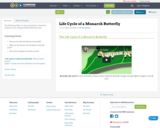
The following video is a short animation I created for students to see a Monarch Butterflies life cycle.
- Material Type:
- Simulation
- Date Added:
- 10/17/2014

The following video is a short animation I created for students to see a Monarch Butterflies life cycle.

Nebraska High School Life Science Standards Unwrapped - This document will provide Nebraska Science teachers links to the Unwrapping documentation for each of the Nebraska Science Standards by grade level.
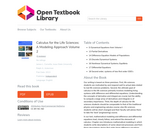
Our writing is based on three premises. First, life sciences students are motivated by and respond well to actual data related to real life sciences problems. Second, the ultimate goal of calculus in the life sciences primarily involves modeling living systems with difference and differential equations. Understanding the concepts of derivative and integral are crucial, but the ability to compute a large array of derivatives and integrals is of secondary importance. Third, the depth of calculus for life sciences students should be comparable to that of the traditional physics and engineering calculus course; else life sciences students will be short changed and their faculty will advise them to take the 'best' (engineering) course.
In our text, mathematical modeling and difference and differential equations lead, closely follow, and extend the elements of calculus. Chapter one introduces mathematical modeling in which students write descriptions of some observed processes and from these descriptions derive first order linear difference equations whose solutions can be compared with the observed data. In chapters in which the derivatives of algebraic, exponential, or trigonometric functions are defined, biologically motivated differential equations and their solutions are included. The chapter on partial derivatives includes a section on the diffusion partial differential equation. There are two chapters on non-linear difference equations and on systems of two difference equations and two chapters on differential equations and on systems of differential equation.
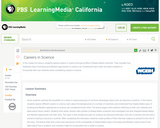
In this media-rich lesson, students explore careers in science through profiles of Alaska Native scientists. They consider how traditional ways of knowing and Western approaches to science can complement each other and allow students to incorporate their own interests when considering careers in science.

This blog post from the Wisconsin Fast Plants website provides an overview and list of resources for teaching life science topics with Wisconsin Fast Plants. This blog is primarily a point of reference for other Fast Plants teaching resources.
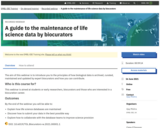
The aim of this webinar is to introduce you to the principles of how biological data is archived, curated, maintained and updated by expert biocurators and how you can contribute.
Who is this course for?
This webinar is aimed at students or early researchers, biocurators and those who are interested in a biocuration career.
Outcomes
By the end of the webinar you will be able to:
Explain how life science databases are maintained
Discover how to submit your data in the best possible way
Explore how to collaborate with the database teams to improve science provision
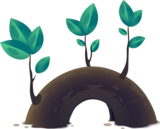
Students dissect fruits to investigate and estimate the number of seeds in each type of fruit. They germinate and plant a seed in the school garden and in the classroom to make observations of the growing plant over time, tracking and recording each stage of the plant life cycle. Students taste the flowers, seeds, and fruit of the new plants when the plant has reached the flower stage of the life cycle.
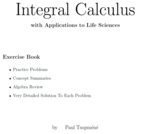
This exercise book contains a wide variety of problems in integral calculus, linear algebra, and linear regression, with applications to differential equations, probability, and life sciences. Every problem has a very detailed solution, and the book is self-contained, as the summary for every concept is provided. The book aims to help students learn the material more efficiently and get better results.
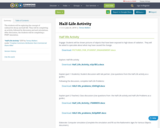
The students will be exploring the concept of radioactive decay and half-life. They will be completing an activity, followed by discussion and and calculations. After discussion, the students will be completing a PHET simulation.

This content was created as a lab manual to accompany the fully online lab associated with Life Science in a Changing Climate, a non-majors biology course. It contains mainly original content with some figures and images taken from open-resources. Each figure is attributed with the source page in the figure description, in accordance to each respective license. The content covers background information, the setup to the online lab activity, and a climate connection.
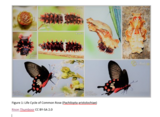
SC.2.L.16.1Observe and describe major stages in the life cycles of plants and animals, including beans and butterflies.Students will complete checking for understanding activity after lessons on the Life Cycle. Review the image of the Life Cycle and provide a description of each stage in one or more sentences. Be prepared to discuss your project with a classmate in a Pair, Think, Share activity.Rison Thumboor CC BY-SA 2.0

This is a lesson about using analogues to look for life on other planets. Learners will use the results of previous lessons to write a scientific proposal to explore another planet or moon in our solar system for signs of life. This proposal should predict the types of energy and nutrients available to sustain life and describe equipment and instruments necessary for exploration and characterization of the target environment. This is activity 4, the capstone activity, in Exploring Deep-Subsurface Life. Earth Analogues for Possible Life on Mars: Lessons and Activities.
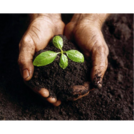
Students will use their knowledge of life cycles to find evidence of various plant life cycles and compare to that of frogs, beetles, butterflies.
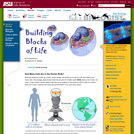
All living beings are made up of cells. Some of them are made up of only one cell and others have many cells. Also in: Dutch | French | Hungarian | Spanish
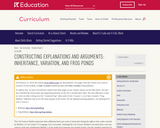
Grade 3 Life Science Module. In this module, students learn about inheritance, variation, and frog ponds. The Life Science Module represents three additional hours per week of instruction during the eight to nine weeks covered by Grade 3: Module 2 of the EL Education K-8 Language Arts Curriculum. Although the Life Science Modules can stand alone, each one connects with and complements Module 2 of the grade-level language arts module lessons in Grades 3-5. To learn more about the Language Arts curriculum and how the Life Science Modules align with the language arts content, visit https://eleducation.org/resources/k-5-language-arts-guidance-document.
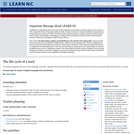
This lesson integrates science into the language arts block. Students will read about plant life cycle events and then write their own books about the life cycle of a plant.
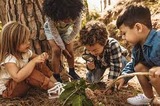
This performance assessment aligns with NGSS Performance Expectation 2.LS4.1 and is intended to be used as an interim assessment. These assessments can either be used summatively, as an end of learning activity, or formatively, utilizing student responses to identify next instructional steps.
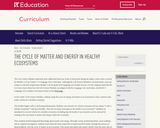
Grade 5 Life Science Module. In this module, students learn about the cycle of matter and energy in healthy ecosystems. The Life Science Module represents three additional hours per week of instruction during the eight to nine weeks covered by Grade 5: Module 2 of the EL Education K-8 Language Arts Curriculum. Although the Life Science Modules can stand alone, each one connects with and complements Module 2 of the grade-level language arts module lessons in Grades 3-5. To learn more about the Language Arts curriculum and how the Life Science Modules align with the language arts content, visit https://eleducation.org/resources/k-5-language-arts-guidance-document.

This course is a project-based introduction to manipulating and characterizing cells and biological molecules using microfabricated tools. It is designed for first year undergraduate students. In the first half of the term, students perform laboratory exercises designed to introduce (1) the design, manufacture, and use of microfluidic channels, (2) techniques for sorting and manipulating cells and biomolecules, and (3) making quantitative measurements using optical detection and fluorescent labeling. In the second half of the term, students work in small groups to design and test a microfluidic device to solve a real-world problem of their choosing. Includes exercises in written and oral communication and team building.
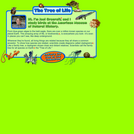
This fun Web site is part of OLogy, where kids can collect virtual trading cards and create projects with them. Here, they explore the Tree of Life cladogram. The site begins with a brief explanation of cladograms and how the Tree of Life shows the relationship of all living things on Earth. A cladogram of fruit is used to demonstrate on a small scale how scientists use this tool to understand how things are similar and different. A portion of the Tree of Life cladogram is included, showing true bacteria, arthropods, mammals, and 11 other important groups of species. Students can mouse over the branching points to see what the subsets have in common. The site also includes a pie chart view that compares the relative size of the most important groups of species. Students can click on each group to learn its characteristics, known species, size range, and other important details.